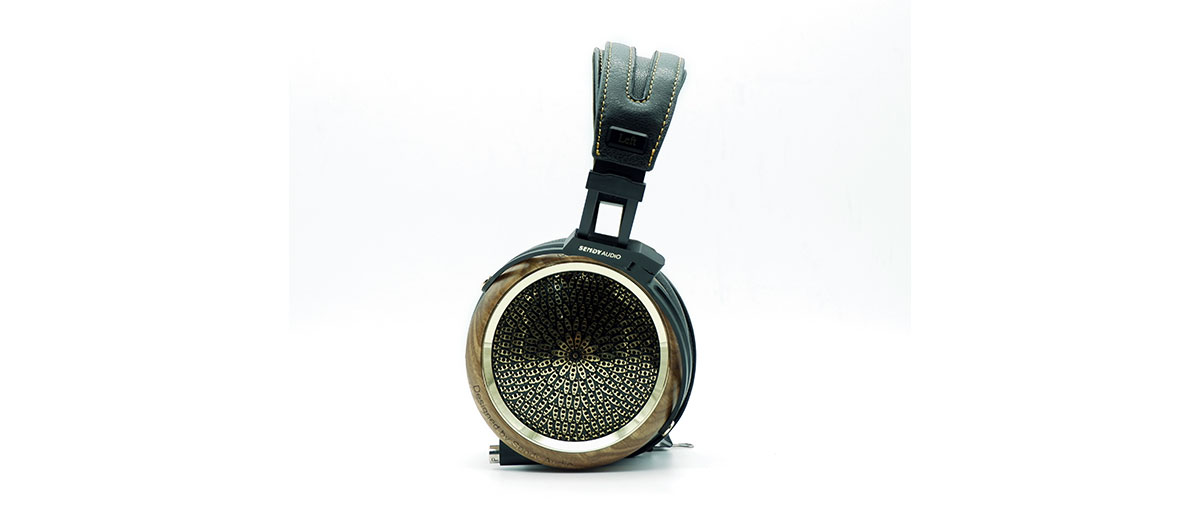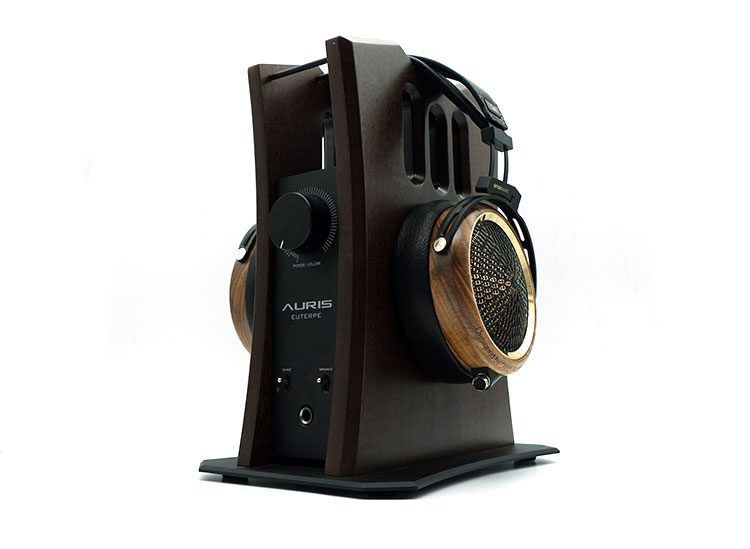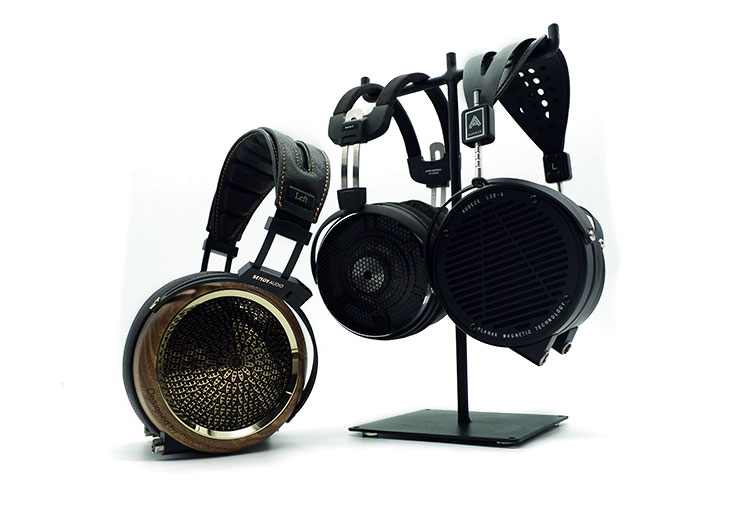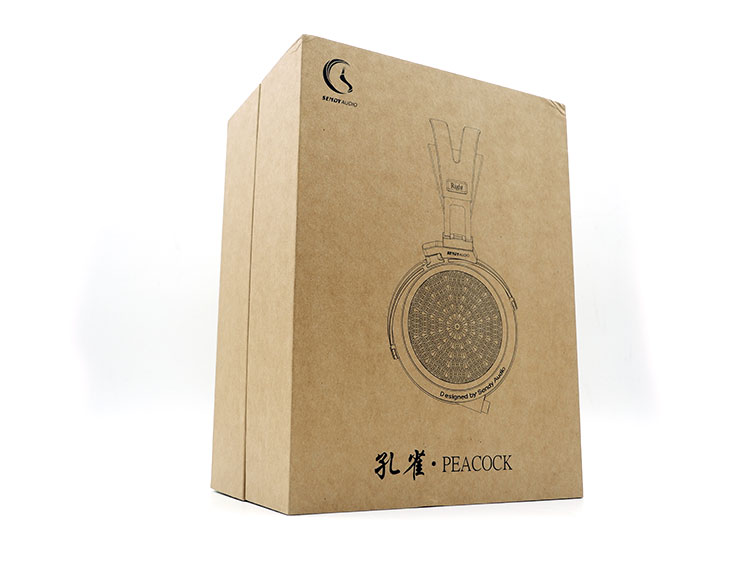Synergy
Efficiency
The Peacock has a sensitivity of 103dB, with an impedance of 50Ω. With my tests though, the Peacock is not the easiest to drive among my headphones, so I could say that they are moderately sensitive headgear.
Through my testing, I tried various sources, and it included my trusty AudioQuest Dragonfly Red, which I use as an everyday carry DAC.
While the little Dragonfly Red can power the Peacock to enjoyable listening levels, I had to max out the Dragonfly Red’s volume range. Furthermore, there is a notable disconnect between the frequency ranges, where the Dragonfly Red couldn’t take full control over the Peacock.
The iBasso DX200 easily ran the Peacock with the balanced 2.5mm output. I found myself generally listening at a volume of 120, which is more than my typical listening levels.
While the Peacock has a 4.4mm termination, which is available with many modern DAPs, care has to be made to ensure that the DAP can properly power the Peacock since it generally requires a source that can generate a good amount of current. Most desktop amplifiers have no trouble running the Peacock though the current levels will be a bit higher.
With both my desktop amps, I also found myself running the amps a bit higher than I usually would with my other headphones. I had to run the Burson Soloist 3X at around 35 on high gain, while the Auris Audio Euterpe needed to be set at 11 o’clock for normal listening levels.
Power
Going up from my lower-powered portable sources to my full-sized desktop sources made a huge difference. When I started with the Dragonfly Red, the bass ended up being bloated and wooly, and honestly disconnected from the rest for the frequencies.
Moving up to the DX200, the Peacock becomes more controlled, where the frequency ranges are generally more coherent. The bass is more or less accurate, but the texture is not as evident with the DX200.
Finally moving into my main desktop system, where I feed a Denafrips Ares II into both the Burson Soloist 3X and the Auris Audio Euterpe, I found the Peacock to be even more enjoyable with both sources.
With the Soloist, the Peacock has a much more pronounced bass region, where the bass has a good sense of attack and decay while being controlled and textured. The overall tonal balance is more of an asymmetrical V shape, where the Soloist highlights the speed and clarity of the Peacock.
The most enjoyable pairing with the Peacock for me though is with the Auris Euterpe. Where the midrange is pushed forward a bit, retaining the generally extended response of the Peacock. The Euterpe also injects a bit of euphony and more liquid harmonic balance particularly in the midrange, giving the Peacock a smoother and more natural presentation.
Select Comparisons
Audeze LCD-X (2019)
Technical
Both these headphones have planar-magnetic drivers housed in earcups that are practically the same size. However, when it comes to the planar driver, the LCD-X has a larger driver at 106mm. Both headphones have an open-back design, however, the LCD-X feels a bit more closed in when it’s worn.
In terms of power requirements, the Peacock requires a bit more power than the LCD-X since the LCD-X has an impedance of 25Ω and a sensitivity of 103dB/mW. This roughly translates to the LCD-X requiring about half the power to achieve the same SPL. True enough, the LCD-X typically requires fewer volume notches to achieve the same volume.
Design
With the suspension headband system on the LCD-X, both headphones easily distribute the headphone’s weight evenly across my head. However, the LCD-X is heavier at 610g, and with less foam on the headband itself, makes it less comfortable particularly with longer listening sessions.
The 2 headphones also have different headband adjustment mechanisms. Where the LCD-X uses a ratchet design, which will only allow for a few discrete steps between each adjustment, and the Peacock allowing for more precision in its adjustment mechanism.
The earcups on each headphone are practically the same size, and the inside of the earpads are also of similar size. However, the tapering of the earpads is different, where the LCD-X is tapered so that the front of the earpad is thinner than the back, while the Peacock is tapered so that the top is thinner than the bottom.
When it comes to comfort, the earpads on the LCD-X is less comfortable, since it’s stuffed with stiffer memory foam which gives less of a seal overall.
In terms of cables, the LCD-X uses a mini XLR connection, while the Peacock uses a Hirose connection. Both connectors are fairly common, so aftermarket cables are easy to find for both headphones. However, in its stock form, the LCD-X is limited to just a 6.35mm SE jack, compared to the balanced connection options available to the Peacock.
Performance
Both headphones are quick and detailed, making it easy for the two to flesh out details within the track. Also, they both extend well into the sub-bass region offering a strong sub-bass foundation to most tracks.
However, when it comes to overall tonal balance, they are a bit different. The LCD-X tends to have a more even-handed overall tonal balance of the two. Starting with the mid-bass, the LCD-X is more subdued, and polite, while retaining the immediate sense of attack and decay that both headphones have.
Going into the midrange, the LCD-X has a comparatively more forward midrange presentation and a stronger vocal and acoustic instrument fundamental. However, the LCD-X significantly drops down going up into the upper midrange and lower treble, making acoustic instruments sound more rounded in tone.
Detail retrieval in the treble frequencies is equally good with both headphones with plenty of speed and decay. Cymbal hits have enough bite and a natural sense tone though slightly more subdued on the LCD-X’s. Both headphones are equally airy and extended through the upper treble.
When it comes to the soundstage the LCD-X imaging is much closer to my head than the Peacock. When it comes to the cohesiveness of the imaging, the LCD-X also sounds slightly less chiseled.
Dynamic range, which also contributes to layering within the soundstage is more delineated with the LCD-X. Since it can play softer tones with more gentleness, while still exhibiting the ability to immediately transition to an emotional crescendo.
Audio Technica ADX-5000
Technical
While both headphones have an open-back design, the similarities in technologies end there. The ADX-5000 uses a tungsten-coated 58mm dynamic driver housed in a highly rigid Polyphenylene Sulfide (PPS)/glass fiber baffle that resists vibrations.
The dynamic drivers on the ADX-5000 have a significantly higher impedance of 420Ω and a sensitivity of just 100dB/mW.
These specifications imply that the ADX-5000 would require a bit more power to reach a certain volume, and true enough, the ADX-5000 requires around 10 volume notches more than the Peacock to reach the same volume level on the Burson Soloist 3X.
Design
With the ADX-5000’s use of generally lighter and cooler velour materials on the headband and earpads, it tends to absorb sweat a bit more so be prepared for the ADX-5000 to smell a bit with extended use. The earpad material on both headphones is equally soft, however.
The ADX-5000 is significantly lighter as well. Weighing in at just 270g, it’s less than half the weight of the Peacock. The significant weight disparity and the use of lighter materials make the ADX-5000 less intrusive with longer listening sessions.
The stock cable that comes with the ADX-5000 is also just single-ended. Aftermarket cables, including balanced versions, might be harder to come by since the ADX-5000 uses Audio Technica’s proprietary A2DC connectors on the headphone side.
The packaging that comes with the ADX-5000 is more premium, with the ADX-5000 coming with a small brown suitcase. The overall packaging of the ADX-5000 is simply larger and gives a feeling that the product is grander overall. However, I can see that the carrying case that comes with the Peacock can be more practical if you want to carry around just the headphones.
Performance
The ADX-5000 has that typical dynamic driver roll-off in the sub-bass region. The ADX-5000’s mid-bass isn’t as forward though, while each hit of the drum has an equally immediate sense of attack.
However, when it comes to the texture of each bass note, the ADX-5000 tends to have a fleshier but hollower bass performance compared to the planted and weighty bass on the Peacock.
The ADX-5000 is more ‘fleet of foot’, with natural-sounding micro-details performing with excellent articulation. Gentle piano keystroke passages can be soft, yet defined and distinct, and larger crescendos also end up being more engaging overall.
The vocal presentation is more forward with the ADX-5000, while again it tends to be more pristine than hefty. Midrange instrument presentation is equally detailed, but also a bit lighter and more forward sounding.
The sense of euphony in the midrange is more prominent in the ADX-5000, where the vocals and instruments have a prominent harmonic overtone that makes the midrange sound more romantic.
The lower treble range on the ADX-5000 is not particularly bright, but it is comparatively brighter. Although both headphones have slightly prominent treble ranges, the ADX-5000 is seemingly lighter, while being more forward. This allows the ADX-5000 to have a more textured and sweeter treble tone.
The ADX-5000 tends to feel more expansive, but images are formed around the same area within the soundstage. However, the ADX-5000 can draw images further in when needed, while image separation tends to be vaguer than the Peacock.
Our Verdict
Aesthetically, the Peacock doesn’t stay away from the design language used by its stablemates despite being the company’s current flagship. Instead, the Peacock takes how Sendy headphones typically look and improve upon most of the aspects of the build by integrating softer and more premium materials, connectors and cables.
Simply said, the Peacock takes a tried and tested design, and brings it to another altogether more artistic level.
The Peacock’s sound on the other hand is a unique take on a highly detailed planar magnetic headphone. Where it has an enjoyable presentation with an uptick in the bass response that manages to remain controlled while allowing midrange and treble details to shine through its well-organized and delineated soundscape.
Sendy Audio Peacock Specifications
- Transducer Type: Planar Magnetic
- Transducer Size: 88mm
- Frequency Response: 20Hz-40kHz
- Sensitivity: 103dB +/-3dB
- Impedance: 50Ω +/- 15%
- Cable Length: 2.0m +/- 0.2m
- Connector: 4.4mm pentaconn
- Weight: 578g without cables





